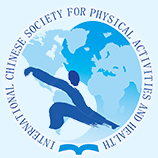Document Type
Article
Keywords
executive function, curvilinear relationship, cognitive benefits
Publication Date
5-2023
Abstract
Purpose: Positive effects of physical activity on cognitive function among children and adolescents have been observed in previous studies. However, little is known about whether there is a dose-response effect of physical activity on cognitive functioning. Especially, the curvilinear relationship between regular physical activity and cognitive functioning remained unexplored. The purpose of this paper was to review the literature on the dose response effect of physical activity on cognitive function among children and adolescents. Methods: A literature search on key words, title, and abstract with the phrases “physical activity and executive function”, “physical activity and cognition”, and “physical activity and cognitive function” was conducted by the authors on five databases: (a) Academic Search Complete; (b) ERIC; (c) Medline; (d) Pubmed; and (e) SportDiscus. Articles that met the inclusive and exclusive criteria were included in this review. Data including eight variables were extracted by the first author and validated by the second author independently. Results: Only four studies examined the dose-response effects of regular physical activities on cognitive functions. Little evidence is available to support the dose response effect. There is no evidence to support a curvilinear relationship between physical activity and cognitive function. Discussion and Conclusion: Research on the dose response effect of physical activity on cognitive function is still in its infancy. More research is warranted to further advance this line of research. Especially, future research should focus on what constitutes the minimal physical activity for cognitive benefits and what constitutes the optimal PA required to achieve maximal cognitive benefits. Findings from this line of research are critical to guiding future interventions and policies on increasing physical activity and cognitive function among children and adolescents in the United States.
DOI
https://doi.org/10.18122/ijpah.020203.boisestate
Recommended Citation
Li, Weidong and Xiang, Ping
(2023)
"A Review on the Dose Response Effect of Regular Physical Activity on Cognitive Function Among Children and Adolescents,"
International Journal of Physical Activity and Health: Vol. 2:
Iss.
2, Article 3.
DOI: https://doi.org/10.18122/ijpah.020203.boisestate
Available at:
https://scholarworks.boisestate.edu/ijpah/vol2/iss2/3
Included in
Exercise Science Commons, Health and Physical Education Commons, Public Health Commons, Sports Studies Commons


